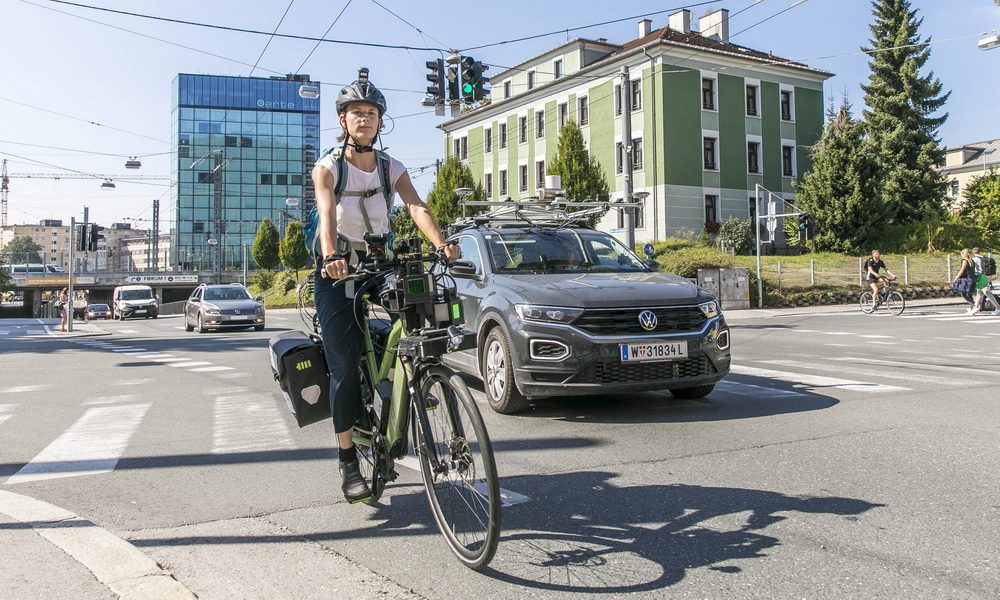Bike2CAV – Avoidance of cyclist collisions thanks to vehicle-to-everything (V2X) communication
Development and validation of methods for the avoidance of cyclist collisions through vehicle-to-x communication.

Developing the connectivity and automatization of vehicles represents a great opportunity to improve cycle safety. An Austrian consortium, led by Salzburg Research, is working on innovative technologies to improve safety for vulnerable road users. Its focus is on finding opportunities for the cooperative detection of collision risks, as well as non-distracting warning concepts.
When it comes to protecting vulnerable road users, there is much work to be done. The European Commission has set a reduction target of 50% by 2030 for accidents involving the death or serious injury of vulnerable road users. Although there has been a slight reduction in accidents since 2013, targets for 2020 were not met. It is vulnerable road users in particular that are at risk: approximately half of the people killed on European roads in 2018 were pedestrians, cyclists or motorcyclists. 83% of cyclist deaths involved a collision with a motorised vehicle. At the same time, ever more people are taking up cycling.
To date, most safety efforts have been focused on recognising the presence of pedestrians. However, cyclists are the central focus of the Bike2CAV project (the acronym stands for “Bicycle to Connected Automated Vehicle”): companies and research organisations are collaborating to investigate and test opportunities for the cooperative detection of collision risks, as well as non-distracting warning concepts. Until now, methods for the cooperative detection of bicycle collision risks have only been simulated. The consortium aims to address this gap by using real-world data from a proof-of-concept prototype to validate these methods.
Project goals
Using an integrated proof-of-concept prototype and real-world data, the project Bike2CAV aims to validate methods for applying the cooperative detection of collision risks and non-distracting warning systems to benefit cyclists.
Bike2CAV tackles the following research topics:
- Improving environmental perception and detecting the intentions of cyclists.
- Cooperative detection of cyclists through CAVs.
- Non-distracting collision warning concepts for cyclists (involving lead users).
- The evaluation of an integrated proof-of-concept prototype.
The role of Salzburg Research
The research group Mobility and Transport Analytics (MTA) is responsible for the overall coordination of the project, as well as for its scientific management. In addition, in this project, MTA focuses its research activities on methods and their validation for the precise self-localisation of cyclists and evaluates the quality of these localisations. The aim of the project is to validate the methods developed by field-testing an integrated proof-of-concept prototype at two different intersections. Salzburg Research is also responsible for this task.
The Innovation and Value Creation (IVC) research group methodically supports the development of concepts for data-based collision warning systems through modern co-creation and design methods.
Project funding
The Bike2CAV research project runs from September 2020 until April 2023. It has funding of 1.29 million Euros from the Federal Ministry for Climate Action, Environment, Energy, Mobility, Innovation and Technology as part of the FTI “Future Mobility” program. The Austrian Research Promotion Agency (FFG) has been authorised for the programme management.






